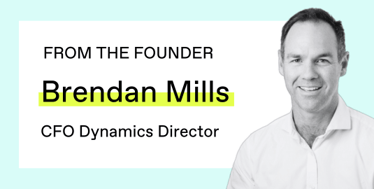Current Year Earnings vs Retained Earnings vs Dividends
In this Article:
→ Current earnings and dividends for non-companies
→ What are current year earnings in a company?
→ Which financial report are current year earnings included in?
→ What are retained earnings in a company?
→ Where does the cash to pay dividends come from?
→ How to calculate earnings and dividends for public companies
→ Why dividends are more nuanced in private companies
→ Dividends as loans in single-shareholder companies
→ Off-setting dividends in tax effective ways
→ Declaring dividends when a company is highly profitable
→ What happens when your earnings are less than paid out dividends?
Earnings & Dividends Explained Simply

“When it comes to earnings and dividends, there are three different terms that are important. They are current year earnings, retained earnings, and then dividends.
Current earnings and dividends for non-companies
Firstly, if you are not running a company – so if you are running your business either as a sole trader, a partnership, or a trust – technically that structure can't have retained earnings, and it doesn't have dividends. It only distributes the money that it creates in a year. Then, at the end of that year, it starts back at zero.
For example, if you have $100,000 of profit that gets distributed, there's nothing retained technically within the trust partnership or sole trader.
For the purposes of this, I'm going to assume you're running a company operation.
What are current year earnings in a company?
First, to calculate current year earnings, it is your profit after any tax that you've paid for the year that you are currently in. If you're in the first month of the financial year or the last month of the financial year, the profit that you've had during that year, after tax, is your current year earnings.
Second, if you are losing money during that month or the year, you've got current year loss, which goes as a negative.
Which financial report are current year earnings included in?
Where these accounts live – your current year earnings, your retained earnings, and then less your dividends – are in the equity section in the bottom section of your balance sheet.
What are retained earnings in a company?
Retained earnings are all the previous year’s current year earnings, less any dividends that have been paid out.
For example, let's say your business has been trading for three full years, prior to this current year's earnings. We've had $400,000 worth of current year earnings after payments of tax. That is what we have left over within the business as retained earnings.
Then, over that 3-year period, let's say we've paid $200,000 worth of dividends. That means our retained earnings as at this year is $200,000.
So, retained earnings are all prior year current earnings. And (sadly) if those earnings aren't positive and they're in loss, then it is retained losses within the company. (The calculation is still the same.)
Where does the cash to pay dividends come from?
Dividends can only be paid out of current year or retained earnings, and the combination of those two numbers combined have to be a positive number.
If you've got current year losses of $100,000 and retained earnings of $70,000, you've got a minus $30,000. You can't technically declare a dividend when you've got a negative retained earnings plus current year earnings value.
Let's drill a little bit closer into dividends. Dividends on the face of it are quite a simple calculation, if you are running a public company. Let me use a public company as an example first.
How to calculate earnings and dividends for public companies
Let's say the public company has retained earnings of $5M and current year earnings of $1M. So all up the total earnings within the business is $6M. If that public company decides it's going to pay out $2M worth of dividends, your total earnings and current year earnings available is $4M. It's $1M current year, $5M retained, which gives us $6M; paying out a dividend of $2M leaves you with $4M.
That is very simple in a public company for one reason – which is that shareholders can't take money out of the company at their own volition or their own discretion.
Why dividends are more nuanced in private companies
But what happens in private companies?
I don't care if it's a private company that has two employees or a private company that has 2000 employees. When you have a very small ownership group of shareholders, what happens with dividends is quite often they will take money in advance of the dividend being declared, and that is where things can get a little bit confusing. So work with me on this.
Dividends as loans in single-shareholder companies
Let's say we have a company where there is a single shareholder, and that single shareholder pays themselves $10,000 in advance every single month for the total year. They will take out $120,000. Now that $120,000 during the course of the year doesn't come out of current year earnings because it's a loan, you're taking money out. It doesn't come out of retained earnings, and it's not yet declared as a dividend. Why?
Because 99.9% of private companies won't actually declare a dividend the same way a listed or a public company would declare a dividend.
Off-setting dividends in tax effective ways
What would happen is at the end of the financial year, the tax accountant would do the work, they'd look at the business and go, “What's the most tax effective thing we can do?”
Now, as I was saying a moment ago, in most privately owned companies, shareholders will take money on a periodical or even more than periodical basis out of the company. That then will get offset by the dividend at the end of the year.
So let's continue with that example. Let's say they've taken $120,000 out in the prior financial year. The accountant will come along and do their work three, six, nine months later potentially from when that year finished. And there's going to be a loan for $120,000, which is money that that owner has taken out of the business. The accountant will then decide how much of the dividend will need to be declared.
Declaring dividends when a company is highly profitable
Now, if the company's been highly profitable, and let's say they've made $250,000, they might be easily be able to say, “We'll declare a dividend of $120,000. We will clear that loan.” And then there's no cash transferred; it extinguishes that loan that the shareholder technically owes to the company. So the money goes out to the shareholder, then the dividend is declared that dividend offsets the cash that has already been paid to the owner.
So unlike the public company, where the money has gone out to the shareholders only when the dividend is declared, this is the opposite direction of that.
What happens when your earnings are less than paid out dividends?
However, what happens if at the end of the year the owner's taken $120,000 and there's only $80,000 of current and retained earnings available? Well, then that becomes a loan. That director or that owner of the business has to take that out as a loan against the company, where he company is effectively loaned that money to the shareholder, and technically that needs to be repaid. Again, the majority of the time, that is only ever repaid through dividends.
Wrap-up
Without going through the tax, technical and boring you with that side, that is the practical element of dividends and how that varies between a public company – which is ironically a very simple way – and a private company, although much smaller a lot of the time, can be a lot more complex and confusing.
There you go. That's current year earnings, retained earnings, and all the inner workings of your dividends.
Understand your finances. Without the fluff.
Join 400+ business owners & finance team leaders who get short, sharp business & accounting insights, delivered straight to your inbox every week. No fluff, no "accountant speak". Just high-level expertise & practical ways to implement them – totally free. Sign up now.



